Related Research Articles

Southern Leyte, officially the Province of Southern Leyte, is a province in the Philippines located in the Eastern Visayas region. Its capital and largest city is Maasin. Southern Leyte comprised the third congressional district Leyte until it was made into an independent province in 1959. Southern Leyte includes Limasawa, an island to the south where the first Roman Catholic Mass in Philippine soil is believed to have taken place and thus considered to be the birthplace of Roman Catholicism in the Philippines.

Surigao del Norte, officially the Province of Surigao del Norte, is a province in the Philippines located in the Caraga region of Mindanao. The province was formerly under the jurisdiction of Region 10 until 1995. Its capital is Surigao City, the most populous in the province. The province comprises two major islands—Siargao and Bucas Grande—in the Philippine Sea, plus a small area at the northeastern tip of mainland Mindanao and other surrounding minor islands and islets. This mainland portion borders Agusan del Norte – between the Municipality of Alegria in Surigao del Norte and the Municipality of Kitcharao in Agusan del Norte; and the province of Surigao del Sur, to the south.
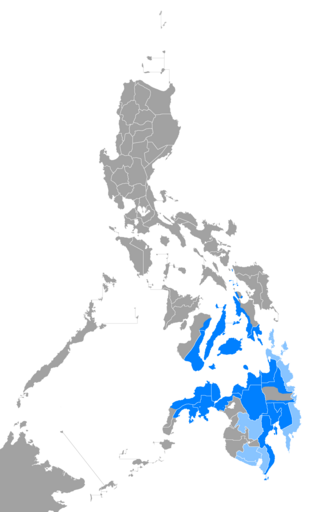
Cebuano is an Austronesian language spoken in the southern Philippines. It is natively, though informally, called by its generic term Bisayâ or Binisayâ and sometimes referred to in English sources as Cebuan. It is spoken by the Visayan ethnolinguistic groups native to the islands of Cebu, Bohol, Siquijor, the eastern half of Negros, the western half of Leyte, and the northern coastal areas of Northern Mindanao and the eastern part of Zamboanga del Norte due to Spanish settlements during the 18th century. In modern times, it has also spread to the Davao Region, Cotabato, Camiguin, parts of the Dinagat Islands, and the lowland regions of Caraga, often displacing native languages in those areas.

The Bisayan languages or Visayan languages are a subgroup of the Austronesian languages spoken in the Philippines. They are most closely related to Tagalog and the Bikol languages, all of which are part of the Central Philippine languages. Most Bisayan languages are spoken in the whole Visayas section of the country, but they are also spoken in the southern part of the Bicol Region, islands south of Luzon, such as those that make up Romblon, most of the areas of Mindanao and the province of Sulu located southwest of Mindanao. Some residents of Metro Manila also speak one of the Bisayan languages.

Tausūg is an Austronesian language spoken in the province of Sulu in the Philippines and in the eastern area of the state of Sabah, Malaysia as well as in the Nunukan Regency, province of North Kalimantan, Indonesia by the Tausūg people. It is widely spoken in the Sulu Archipelago, the Zamboanga Peninsula, southern Palawan, Malaysia and Indonesia.
The Central Philippine languages are the most geographically widespread demonstrated group of languages in the Philippines, being spoken in southern Luzon, Visayas, Mindanao, and Sulu. They are also the most populous, including Tagalog, Bikol, and the major Visayan languages Cebuano, Hiligaynon, Waray, Kinaray-a, and Tausug, with some forty languages all together.
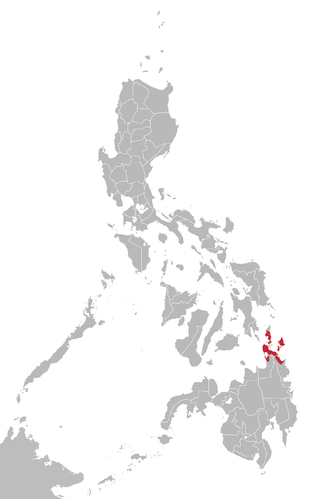
Surigaonon is an Austronesian language spoken by Surigaonon people. As a regional Philippine language, it is spoken in the province of Surigao del Norte, Dinagat Islands, Surigao del Sur, and some portions of Agusan del Norte, especially the towns near Lake Mainit, Agusan del Sur and Davao Oriental.

Surigao City, officially the City of Surigao, is a 1st class component city and capital of the province of Surigao del Norte, Caraga Region, on the north-eastern island of Mindanao, Philippines. It is the most populous in the province with a population of 171,107 people according to 2020 census.

Tubod, officially the Municipality of Tubod, is a 5th class municipality in the province of Surigao del Norte, Philippines. According to the 2020 census, it has a population of 15,043 people.

San Juan, officially the Municipality of San Juan, is a 5th class municipality in the province of Southern Leyte, Philippines. According to the 2020 census, it has a population of 14,912 people.

Baybay, officially the City of Baybay, is a 1st class component city in the province of Leyte, Philippines. It has a population of 111,848 people.
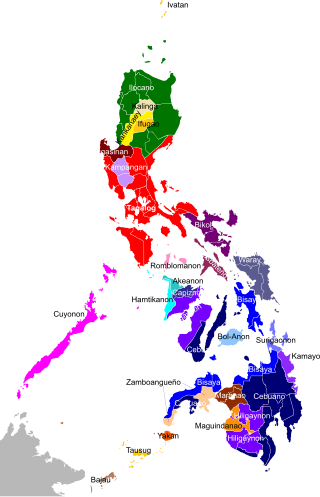
The Philippines is inhabited by more than 182 ethnolinguistic groups, many of which are classified as "Indigenous Peoples" under the country's Indigenous Peoples' Rights Act of 1997. Traditionally-Muslim peoples from the southernmost island group of Mindanao are usually categorized together as Moro peoples, whether they are classified as Indigenous peoples or not. About 142 are classified as non-Muslim Indigenous people groups, and about 19 ethnolinguistic groups are classified as neither Indigenous nor Moro. Various migrant groups have also had a significant presence throughout the country's history.
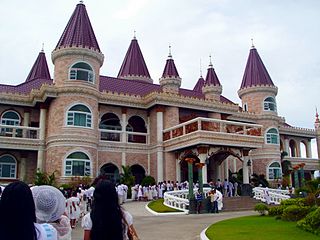
Dinagat Islands, officially the Province of Dinagat Islands, is an island province in the Caraga region of the Philippines, located on the south side of Leyte Gulf. The island of Leyte is to its west, across Surigao Strait, and mainland Mindanao is to its south. Its main island, Dinagat, is about 60 kilometres (37 mi) from north to south. San Jose serves as its provincial capital while Basilisa is the most populous town in the province.

The Waray people are a subgroup of the larger ethnolinguistic group Bisaya people, who constitute the 4th largest Filipino ethnolinguistic group in the Philippines. Their primary language is the Waray language, an Austronesian language native to the islands of Samar, Leyte and Biliran, which together comprise the Eastern Visayas Region of the Philippines. Waray people inhabit most of Samar where they are called Samareños/Samarnons, the northern part of the island of Leyte where they are called Leyteños, and the island of Biliran. In Leyte island, the Waray-speaking people are separated from the Cebuano-speaking Leyteños by the island's mountain range at the middle.
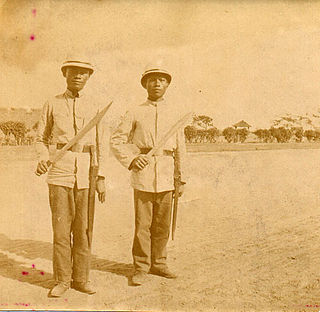
The Cebuano people are the largest subgroup of the larger ethnolinguistic group Visayans, who constitute the largest Filipino ethnolinguistic group in the country. They originated in the province of Cebu in the region of Central Visayas, but then later spread out to other places in the Philippines, such as Siquijor, Bohol, Negros Oriental, southwestern Leyte, western Samar, Masbate, and large parts of Mindanao. It may also refer to the ethnic group who speak the same language as their native tongue in different parts of the archipelago. The term Cebuano also refers to the demonym of permanent residents in Cebu island regardless of ethnicity.

The Boholano people, also called Bol-anon, refers to the people who live in the island province of Bohol. They are part of the wider Visayan ethnolinguistic group, who constitute the largest Filipino ethnolinguistic group.
Boholano is a variant of the Cebuano language spoken in the island province of Bohol in the Visayas and a major portion of Southern Leyte, as well as parts of Mindanao, particularly in Northern Mindanao and Caraga. It is sometimes erroneously described as a separate language even though Binol-anon originated as a dialect continuum of the Cebuano language.

The Karay-a language is an Austronesian regional language in the Philippines spoken by the Karay-a people, mainly in Antique.
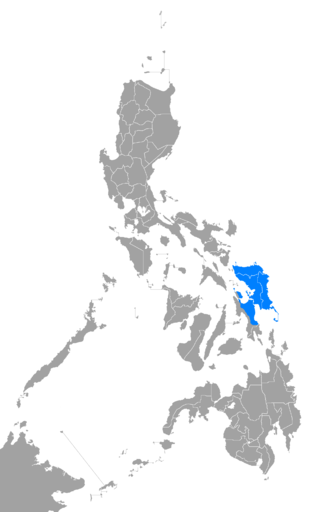
Waray is an Austronesian language and the fifth-most-spoken native regional language of the Philippines, native to Eastern Visayas. It is the native language of the Waray people and second language of the Abaknon people of Capul, Northern Samar, and some Cebuano-speaking peoples of western and southern parts of Leyte island. It is the third most spoken language among the Bisayan languages, only behind Cebuano and Hiligaynon.

Eastern Visayas is an administrative region in the Philippines, designated as Region VIII. It consists of three main islands: Samar, Leyte, and Biliran. The region has six provinces: Biliran, Leyte, Northern Samar, Samar, Eastern Samar, Southern Leyte, one independent city, Ormoc, and one highly urbanized city, Tacloban. The highly urbanized city of Tacloban is the sole regional center. These provinces and cities occupy the easternmost islands of the Visayas group of islands, hence the region's name. Some historians believe that the oldest ancient kingdom in the Philippines is found in this region, the Lakanate of Lawan, which plays a significant role in the Polynesian and Austronesian intermigration.
References
- ↑ Kinabalian at Ethnologue (18th ed., 2015) (subscription required)